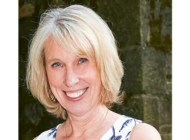
Ever since coming across a trove of Margaret Patterson’s prints early in his career, more than 30 years ago, Steven Thomas of Woodstock, Vt., has been captivated by the simplicity and elegance of woodblock prints. Today, he and his wife, Deborah Bassett, travel to key antiques shows around the United States, where he is known for fine art and antiques, but woodblock prints remain his first love.
How did you get interested in woodblock prints?
When I began in the business in 1980 I concentrated on graphic arts. I went to shows and bought all the dealer catalogs I could find to educate myself. In 1986 – likely in response to an ad I had been running – and still run! in The Bee ironically – I was offered a grouping of more than 40 Margaret Patterson prints. I put out a catalog and held an exhibition in the basement of a group shop in Windsor, Vt., which was quite successful. It was the first retrospective of Patterson’s prints prior to James Bakker’s two more extensive exhibits in 1988 and 1990. I think it helped establish me in the business.
A couple of years later, I was offered a collection of the original Provincetown white-line color woodcut printing blocks by Karl Knaths, Ora Maxim and Agnes Weinrich. That purchase resulted in an exhibit in 1988 at the Provincetown Art Association and Museum, which was, I think, the first museum exhibit devoted to printing matrices. I have since written articles on the medium and since the 1990s have led a yearly discussion group on Arts and Crafts artwork at the national Arts and Crafts Conference at the Grove Park Inn in Asheville, N.C. While I buy all media of artwork, woodblock prints have always remained my focus and my first love.
Does this genre get its proper due in the art world?
I think so. There has always been an appreciation of the woodblock medium in the relatively small world of the fine print business, and museums have put together nice collections over the years. When I first did 3D National Arts and Crafts Show in Asheville in 1990, there were very few woodblock prints at the show. This was despite the fact that Gustav Stickley had used woodblocks on the covers of his Craftsman magazine at the turn of the last century, and the artist and printmaker Arthur Wesley Dow had taught so many of the figures in the movement. They were just not a part of the Arts and Crafts revival at the time. One of Bertha Lum’s woodblock prints was featured as the frontispiece of the California Design 1910 back in 1974, but it was not until the 1997 exhibit “Inspiring Reform: Boston’s Arts and Crafts Movement (Marilee Meyer, et al.)” that the color woodblock print received the attention I think it deserved in the Arts and Crafts Movement.
Who are your favorite artists of the Arts and Crafts era?
While the work of the “big guns,” Arthur Wesley Dow, Gustave Baumann, Frances Gearhart, Patterson, etc, have always been among my favorites, I happen to have a soft spot for those lesser-known artists that have come to the forefront more recently: Jane Berry Judson, the brothers Corwin and Waldo Chase from Seattle, and Annie Crawford and Emma Kaan, who worked together in western New York. One of the delights of the woodblock medium is that often long-forgotten artists reemerge. Graphic artists who worked in the etching or lithographic mediums needed elaborate studios for creating and printing their work. A woodblock artist only needed a block of wood, a carving tool, pigments and paper and could work alone. The Chase brothers created some of their output while living in a teepee in Washington state! Some never achieved much fame in their lifetime, but their work survived with family or in storage. Nearly 40 years into the business I still find fabulous works by artists who are “unlisted” and I have never seen before!
What is the best-selling venue or platform these days for you?
The Arts and Crafts Conference at the Grove Park Inn in Asheville, which I have done for 28 of its 30 years. There is a large group of dealers and collectors who attend that have an abiding interest in the movement. I do also sell well at other antiques shows and from my website and my sporadic email “blasts” of new purchases.
Blanche Lazzell or Arthur Wesley Dow?
Boy, tough one! I admire Dow because he is the seminal figure in not only the color woodblock movement but also much of the Arts and Crafts Movement. And his work is sublime. Lazzell’s work can bring me to my knees from across the room. Have I answered the question?
You and your wife opened up another shop this summer in White River Junction. Tell us about it.
This is our first and only shop. Our offices are in Woodstock, but we have never had a shop there. We opened the shop primarily for buying inventory, but it has worked pretty well as a selling venue. We have it stocked with a little bit of everything we deal in: antique jewelry, artwork of all media, silver, pottery, etc. The things that Deborah and I specialize in complement each other well, I think. I have described it as a Pier Show in White River Junction. It’s at 85 Gates Street and is open Thursday through Saturday, 11 to 5, or by appointment.
-Andrea Valluzzo





